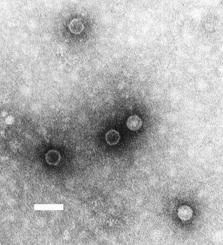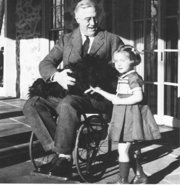Since the World Health Assembly of the World Health Organization (WHO) resolved in 1988 to eradicate poliomyelitis worldwide, the estimated number of polio cases has declined >99%, and the number of countries from which reports of polio were received has &dined from 125 to seven. Ethiopia and Sudan have not reported wild poliovirus (WPV) cases in >1 year, and Somalia is approaching 1 year without evidence of WPV transmission. This report summarizes progress made in these countries during January 2002-August 2003 and describes remaining challenges to polio eradication (1). To maintain this progress, continued funding and improved access to children, particularly in the greater Mogadishu area in Somalia, are required.
Routine Vaccination
In Ethiopia, reported national routine vaccination coverage of children aged <1 year with 3 doses of oral poliovirus vaccine (OPV3) was 50% in 2001 and 51% in 2002. In Somalia, which has not had a functioning national government since 1991, international nongovernmental organizations supported by WHO, the United Nations Children's Fund (UNICEF), and other United Nations agencies deliver vaccination services. Estimated OPV3 coverage increased in Somalia from 33% in 2001 to 40% in 2002. In the government-controlled areas of Sudan, reported OPV3 coverage was 71% in 2001 and 64% in 2002. OPV3 coverage in southern Sudan, which is affected by civil conflict, has been estimated by WHO-UNICEF to have been <20% in 2001 and 2002.
Supplementary Immunization Activities
During 2002-2003, all three countries conducted house-to-house supplementary immunization activities (SIAs). These included at least two rounds of National Immunization Days (NIDs) * in all countries and additional Sub-National Immunization Days (SN1Ds) ([dagger]) that targeted areas and populations at high risk.
In Ethiopia during 2002, two rounds of SNIDs were conducted in March and April and two rounds of NIDs in October and December, in which approximately 3.3 million and 14.0 million children were vaccinated, respectively. In Ethiopia, vaccination activities were undertaken in the Somali Region several weeks earlier than the rest of the country in synchronization with SNIDs in neighboring Somalia. In 200.3, because of a lack of resources, planned SNIDs were cancelled, and NIDs have been reduced to SNIDs targeting approximately 2.5 million children.
In Somalia, SIAs continued despite ongoing conflict, although with limited access to children in the Mogadishu area. Four rounds of SNIDs were conducted in 2002, reaching approximately 600,000 children in each of the first two rounds and approximately 1.0 million children in each of the other two rounds. Two rounds of NIDs were conducted in March and April 2002, reaching approximately 1.3 million children in each round. Two rounds of NIDs were held in 2003, reaching approximately 1.3 million children in February and approximately 1.4 million children in March, and one round of SNIDs was conducted in May 2003, reaching approximately 98,000 children.
In Sudan during 2003, SIAs reached more children than ever before, particularly in the south, where approximately 500,000 more children were vaccinated than in 2002. In the government-controlled areas of Sudan, four rounds of SNIDs were held in 2002, reaching approximately 5.6-5.8 million children in each round. During March April 2003, two rounds of SNIDs were conducted, reaching approximately 1.1 million children in each round. SNIDs targeting approximately 2.8 million children are planned for November and December 2003. In southern Sudan, NIDs were held in February, March, and April 2002, reaching approximately 1.2 million children; SNIDs were conducted in October and November 2002, reaching approximately 700,000 children and 1.1 million children, respectively. NIDs conducted during March-April 2003 reached approximately 1.7 million children.
Acute Flaccid Paralysis Surveillance
The quality of public health surveillance for cases of acute flaccid paralysis (AFP) is evaluated by two key indicators established by WHO: annual reporting rate (target: nonpolio AFP rate of > 1 per 100,000 population aged <15 years) and completeness of specimen collection (target: two adequate stool specimens from >80% of persons with AFP) (Table). During 2002-2003, Ethiopia, Somalia, and Sudan continued to exceed the target for the nonpolio AFP rate. During 2002-2003 in Ethiopia, the nonpolio AFP rate decreased from 1.9 to 1.1 This decline was attributable to all suspected AFP cases being investigated by WHO surveillance medical officers to ensure that stool specimens are collected only from true AFP cases (Table).
During 2002-2003, adequacy of stool specimen collection improved substantially; the proportion of persons with AFP with two adequate stool specimens increased from 69% to 82% in Ethiopia and from 67% to 77% in Somalia. Sudan achieved the target with 90% in 2002 and 2003.
AFP cases in which paralytic polio could not be excluded reliably because of a lack of adequate stool specimens were classified as polio-compatible. During 2001-2002, the number of reported polio-compatible cases decreased in Ethiopia (from 47 to 36), Somalia (from l0 to four), and Sudan (from 12 to one). As of August 2003, three polio-compatible cases had been reported in Ethiopia, four in Somalia, and one in Sudan.
WPV Incidence
During January-August 2003, no WPV cases were reported in Ethiopia, Somalia, or Sudan. The most recently reported cases in Ethiopia and Sudan occurred in January and April 2001, respectively; in both countries, poliovirus type 1 was isolated. During 2002, three virologically confirmed WPV type 3 cases were identified in the Mogadishu area of Somalia, the most recent case occurring in October (Figure).
[FIGURE OMITTED]
All stool specimens are processed by WHO-accredited poliovirus laboratories. In 2002, the National Polio Laboratory at the Ethiopian Health and Nutrition Research Institute processed 1,078 specimens. Specimens from Somalia and southern Sudan are sent to the Kenya Medical Research Institute, which during 2002 processed 216 specimens for Somalia and 175 for southern Sudan. The Sudan national polio lab processed 645 specimens from cases in government-controlled areas in 2002.
The proportion of specimens with nonpolio enterovirus (NPEV) isolated is used as a combined indicator of quality of specimen transport and sensitivity of laboratory processing; a rate of >10% is considered acceptable. In 2002, the NPEV rate was 24% for Ethiopia, 13% for Somalia, and 12% for Sudan.
* Nationwide mass campaigns during a short period (days to weeks) in which 2 doses of OIW are administered to all children (usually aged <5 years), regardless of previous vaccination history, with an interval of 4-6 weeks between doses.
([dagger]) Mass campaigns similar to NIDs but in a smaller area.
Editorial Note: During January 2002-August 2003, substantial progress was made toward the eradication of polio in Ethiopia, Somalia, and Sudan. Ethiopia and Sudan have not reported a WPV-confirmed case since the first quarter of 2001, and Somalia is approaching 1 year without detection of WPV transmission. Any remaining transmission in Somalia is likely to be limited to the greater Mogadishu area. The continued progress in these countries demonstrates the feasibility of polio-eradication strategies, even in countries and areas affected by conflict.
The data presented in this report are subject to at least two limitations. First, because no national census has been conducted in these three countries for several years, accurate population data are not available, which might lead to under- or overestimating AFP surveillance indicators and coverage rate for routine immunization and SIAs. Second, although AFP surveillance indicators are being met at the national level, these indicators are not being achieved at every subnational level. Progress in Ethiopia, Somalia, and Sudan is attributable to partnerships in support of polio-eradication activities. In Ethiopia, collaboration among government ministries and use of elected parliamentary committees to promote polio-eradication strategies continue to sustain gains. Also, additional surveillance officers posted to work with regional health bureaus and technical support from CDC Stop Transmission of Polio teams have contributed to improved AFP surveillance. In Somalia, the joint coordination, implementation, and promotion of polio activities by UNICEF and WHO supported eradication in an area with no central government and have guaranteed effective use of funds. In Sudan, partners have successfully coordinated activities between the government-controlled areas of the north and the nongovernment-controlled areas of the south. Rotary International has provided financial resources and volunteer support for these efforts.
Progress in these countries also is attributable to the use of data to support decision-making. For example, identification of unvaccinated children in the Mogadishu area led to implementation throughout Somalia of "zero-dose" campaigns (i.e., house-to-house campaigns over a number of days that target all children with <3 doses of OPV and that also register all newborns). These campaigns have likely curtailed any existing poliovirus circulation. In Somalia and Sudan, identification of large numbers of polio-compatible cases in 2001 led to the introduction in 2002 of a new mandatory detailed investigation from to improve case classification.
In Ethiopia, challenges to the eradication programs include strengthening program implementation in Afar and Somali Region, where infrastructure is poor and insecurity is persistent. In Afar and Somali Region, AFP surveillance is poor, and in Somali Region, regular population movements occur to and from the Mogadishu area of Somalia. In addition, access to children in Mogadishu must be rapidly improved to interrupt any remaining WPV transmission. Effective SIAs during the remainder of 2003 and during 2004-2005 must be assured. Finally, the necessary financial resources must be provided in a timely manner to support all program activities.
During 2003-2004, independent technical advisory groups will monitor progress and provide guidance to all three countries. In Ethiopia and Sudan, the process of laboratory containment, required as part of the certification of eradication, will continue. During 2004, Ethiopia is planning to conduct two rounds of SNIDs, Somalia is planning two rounds of NIDs and two rounds of SNIDs, and Sudan is planning two rounds of SNIDs. These activities will need continued partner support to ensure the achievement of polio eradication.
Reference
(1.) CDC. Progress toward poliomyelitis eradication--Ethiopia, Somalia, and Sudan, January 2001-October 2002. MMWR 2002;51:1070-2.
Reported by: Country Offices for Ethiopia, Somalia, and Sudan, World Health Organization. Polio Eradication Programme, Regional Office for Africa, World Health Organization, Harare, Zimbabwe. Polio Eradication Programme, Regional Office for the Eastern Mediterranean, World Health Organization, Cairo, Egypt. Office of the Director-General, World Health Organization, Geneva, Switzerland. Div of Viral and Rickettsial Diseases, National Center for Infectious Diseases; Global Immunization Div, National Immunization Program, CDC.
COPYRIGHT 2003 U.S. Government Printing Office
COPYRIGHT 2004 Gale Group




